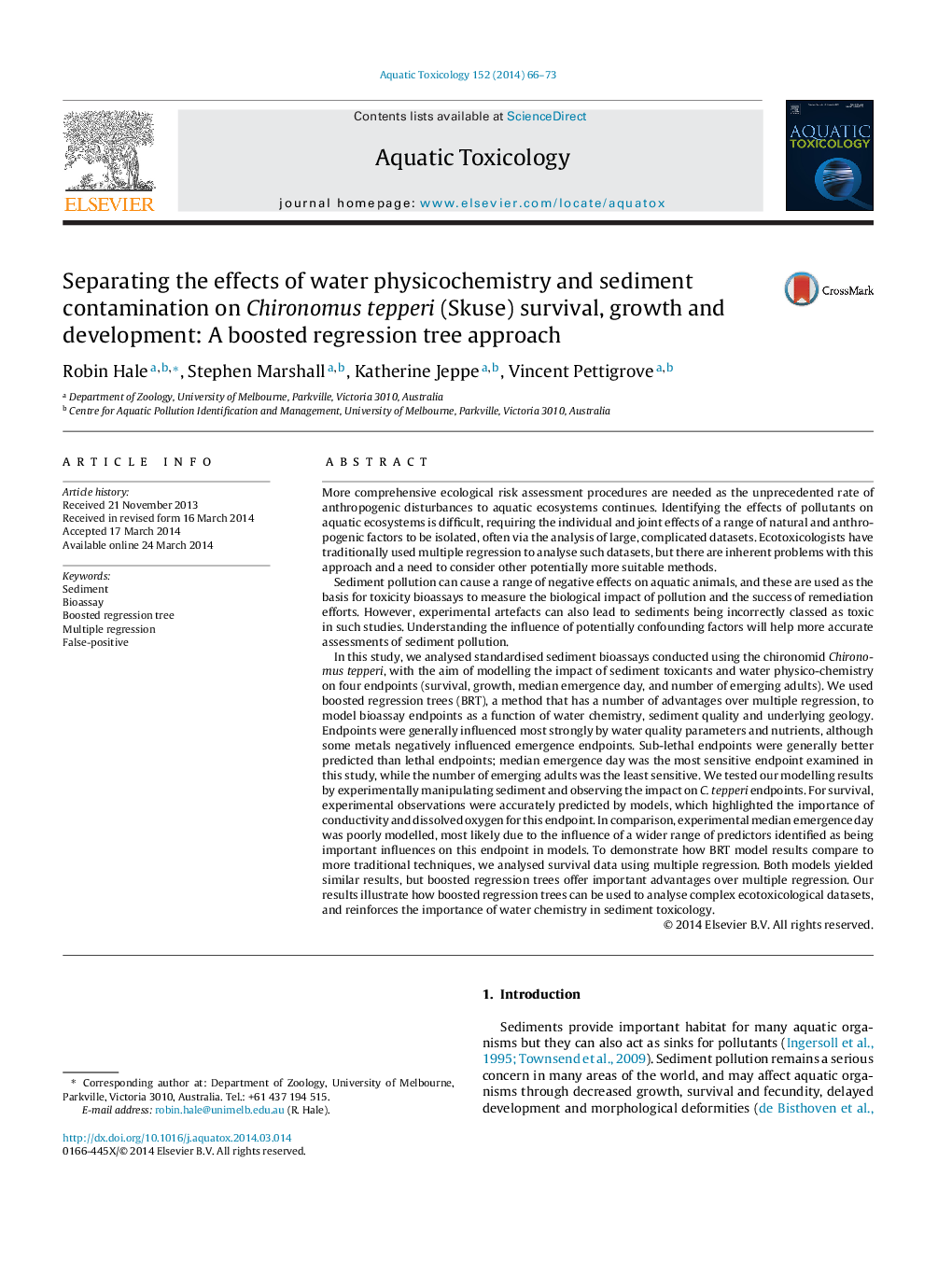| Article ID | Journal | Published Year | Pages | File Type |
|---|---|---|---|---|
| 6382365 | Aquatic Toxicology | 2014 | 8 Pages |
Abstract
In this study, we analysed standardised sediment bioassays conducted using the chironomid Chironomus tepperi, with the aim of modelling the impact of sediment toxicants and water physico-chemistry on four endpoints (survival, growth, median emergence day, and number of emerging adults). We used boosted regression trees (BRT), a method that has a number of advantages over multiple regression, to model bioassay endpoints as a function of water chemistry, sediment quality and underlying geology. Endpoints were generally influenced most strongly by water quality parameters and nutrients, although some metals negatively influenced emergence endpoints. Sub-lethal endpoints were generally better predicted than lethal endpoints; median emergence day was the most sensitive endpoint examined in this study, while the number of emerging adults was the least sensitive. We tested our modelling results by experimentally manipulating sediment and observing the impact on C. tepperi endpoints. For survival, experimental observations were accurately predicted by models, which highlighted the importance of conductivity and dissolved oxygen for this endpoint. In comparison, experimental median emergence day was poorly modelled, most likely due to the influence of a wider range of predictors identified as being important influences on this endpoint in models. To demonstrate how BRT model results compare to more traditional techniques, we analysed survival data using multiple regression. Both models yielded similar results, but boosted regression trees offer important advantages over multiple regression. Our results illustrate how boosted regression trees can be used to analyse complex ecotoxicological datasets, and reinforces the importance of water chemistry in sediment toxicology.
Related Topics
Life Sciences
Agricultural and Biological Sciences
Aquatic Science
Authors
Robin Hale, Stephen Marshall, Katherine Jeppe, Vincent Pettigrove,
